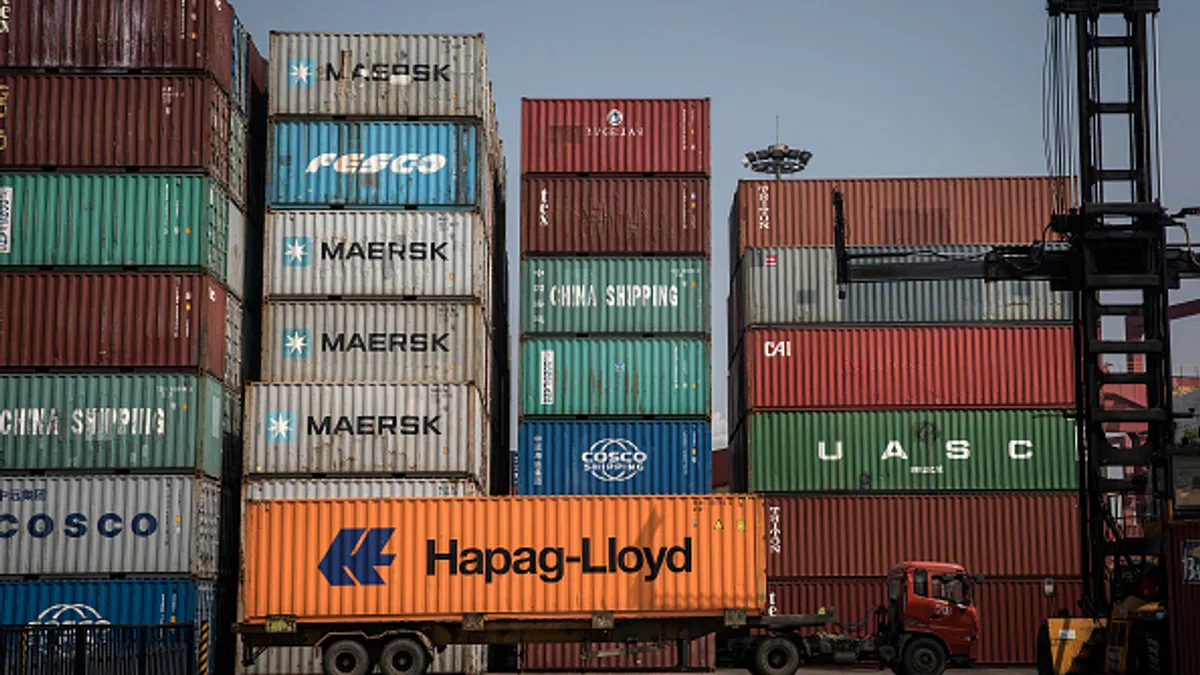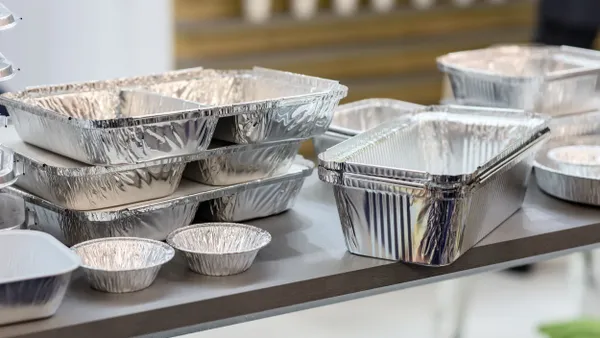As interest in achieving sustainability targets increases among companies both domestic and foreign, many are exploring ways to go circular. Some entrepreneurial intermediaries, however, have already anticipated a future of reuse when it comes to one aspect of supply chains: corrugated shipping boxes.
Philadelphia-based American Box & Recycling developed a business model back in the 1950s centered around once-used boxes. At the time, it was a hyperlocal conduit between small businesses that had boxes to unload and those that needed to purchase them. Over the years, American Box has grown to serve larger companies, mostly across the Northeast and Midwest, but also in parts of the Southeast.
These customers tend to be off-price retailers, manufacturers, wholesalers and liquidators that see value in giving secondary packaging of all shapes and sizes another life for back-of-house operations, or moving product from distribution centers to storefronts. American Box does offer new boxes as a value-add service; it buys those from outside vendors. But 85% of the 15 million boxes it turned over and shipped last year were used. “We’re just expanding that life that the box has,” said President Brandon Spradlin.
Pharmaceutical companies, as well as food and beverage and component manufacturers — usually within a 100-mile radius of one of American Box’s three warehouses — provide a consistent stream of product. They bring material in for manufacture, “then typically those boxes get stacked and put into a baler [and then a] recycling container,” said Spradlin. “What we do is go in and say, ‘we’ve got a phenomenal alternative for you: Just stack them and put them on our trailer [to] bring back to our facility,’” where every box is inspected for wear-and-tear.
American Box buys at “significantly above OCC market,” which Spradlin said can fluctuate but recently topped out around $35 per ton. Customers make more money working with his company than if they recycled the material. “That's helped us to create dependable revenue sources,” he said
His company’s product sells at prices 30% to 50% lower than new boxes. In this way, Spradlin said American Box acts as a landfill-diversion partner for its customers. It also offers assistance with recycling hard-to-dispose-of stretch film, PET strapping, aluminum, electronics, organics or other materials that can help clients who are attempting to lower greenhouse gas impacts or seeking TRUE certification.
American Box breaks with traditional, linear supply chain systems that have multiple missed opportunities to divert for reuse, said Sandra Goldmark, a professor and director of campus sustainability and climate action at Barnard College.
The fact that most corrugated containers make their way into the recycling stream is a plus, but that isn’t always the optimal outcome from a lifecycle standpoint.
“Should I be using recycled boxes? Sure. Should I be recycling my boxes? Absolutely. Should I also use any given box as many times as I possibly can? Yes, and that's how we really begin to reduce waste in the system and therefore reduce emissions,” she said. “When we see core business models that are not just about reducing, but are about building revenue streams that are sustainable, circular and therefore viable long-term, that's where things start to get really exciting,”
Goldmark sees boxes as a potential focus area for major companies pursuing zero waste goals or looking for ways to minimize their footprints. Ikea, for example, has pledged to become “100% circular” by 2030. Target has also pledged to redesign all its owned-brand products for 100% circularity by 2040.
Other businesses — such as Port Packaging, also based in Philadelphia, and United Container, which has three locations in the Midwest, East and South — also follow this box reuse model. In addition, an online hub called BoxCycle finds reused boxes by zip code.
Business is sprightly enough that American Box opened two new facilities, near Pittsburgh and Dayton, Ohio, in the last five years. “It’s been amazing to see the demand and the growth,” said Spradlin.
Although box shipments plummeted by 8.4% in Q4 2022, Rachel Kenyon, senior vice president of the Fibre Box Association, intimated that second-use box companies didn’t present a threat to sales in the sector. In fact, those companies’ missions line up with the broader industry’s sustainability goals.
“The corrugated cardboard packaging industry is committed to keeping box fibers in use for as long as possible,” she wrote in an email. “A circular approach has made boxes … reusable and sustainable for many years. Even when other materials are recycled, they may not come back as the exact same product — boxes do.”
Spradlin said that boxes are often reused just once before getting “repulped and turned into paper or another box after.” American Box is exploring ways to continue the reuse, but logistics are tricky. After boxes leave a distribution center, they often go to a nationwide network of shipping and receiving departments. Plus a box loses integrity every time it’s taped and reopened. American Box inspects the condition and structural integrity of each box it collects, while also peeling off excess tape.
However, said Spradlin, “We have some local customers where [this model] might be a better fit because they have enough stores centrally located, whereby we could collect those boxes and return them back to their [distribution control system].”
To make this sort of ongoing circularity work on a larger scale, Barnard’s Goldmark sees changing corporate behavior as “a big lift, because companies are probably going to have to build their own reverse logistics system to get boxes back into their warehouse.” Still, she said, “We had the capacity to build an incredibly complex linear system. We have the intellectual and technical capacity to build a circular one.”






















